Datsun GO Plus [2015-2018] D1
- GO Plus [2015-2018]
- Specs & Features
- Variants
- Colours
![Datsun GO Plus [2015-2018] D1 Datsun GO Plus [2015-2018] D1](https://imgd.aeplcdn.com/664x374/cw/ec/11240/Datsun-GO-Plus-Exterior-119167.jpg?wm=0&q=80)
![Datsun GO Plus [2015-2018] Right Rear Three Quarter Datsun GO Plus [2015-2018] Right Rear Three Quarter](https://imgd.aeplcdn.com/664x374/ec/26/31/17065/img/m/Datsun-Go-Plus-Right-Rear-Three-Quarter-44971_ol.jpg?v=201711021421&q=80)
![Datsun GO Plus [2015-2018] Front View Datsun GO Plus [2015-2018] Front View](https://imgd.aeplcdn.com/664x374/cw/ec/23775/Datsun-GO-Plus-Front-view-74355.jpg?v=201711021421&wm=1&q=80)
![Datsun GO Plus [2015-2018] Front View Datsun GO Plus [2015-2018] Front View](https://imgd.aeplcdn.com/664x374/cw/ec/20629/Front-view-59646.jpg?v=201711021421&wm=1&q=80)
![Datsun GO Plus [2015-2018] Driving Datsun GO Plus [2015-2018] Driving](https://imgd.aeplcdn.com/664x374/cw/ec/24932/Datsun-GO-Plus-Driving-80176.jpg?v=201711021421&wm=1&q=80)
![Datsun GO Plus [2015-2018] Right Rear Three Quarter Datsun GO Plus [2015-2018] Right Rear Three Quarter](https://imgd.aeplcdn.com/664x374/ec/26/31/17065/img/ol/Datsun-Go-Plus-Right-Rear-Three-Quarter-44974.jpg?v=201711021421&q=80)
![Datsun GO Plus [2015-2018] Left Rear Three Quarter Datsun GO Plus [2015-2018] Left Rear Three Quarter](https://imgd.aeplcdn.com/664x374/ec/26/31/17065/img/ol/Datsun-Go-Plus-left-rear-three-quarter-44975.jpg?v=201711021421&q=80)
![Datsun GO Plus [2015-2018] Left Front Three Quarter Datsun GO Plus [2015-2018] Left Front Three Quarter](https://imgd.aeplcdn.com/664x374/ec/26/31/17065/img/ol/Datsun-Go-Plus-Left-Front-Three-Quarter-44972.jpg?v=201711021421&q=80)
Variant
Specifications & Features
- Specifications
- Features
- Specifications
- Features
Specifications
Engine & Transmission
- Engine1198 cc, 3 Cylinders Inline, 4 Valves/Cylinder, DOHC
Timely services will keep a motor efficient and in top shape.
- Engine TypeDOHC 12Valve3 Cylinders
The official title given by the manufacturer in terms of the name of the engine, the displacement and the number of cylinders.
A bigger displacement and more than four-cylinders generally indicate a performance-oriented engine.
- Fuel TypePetrol
All cars in India either run on petrol, diesel, CNG, LPG or electric power.
- Max Power (bhp@rpm)67 bhp @ 5000 rpm
Gives a good idea of the performance of the vehicle under full thrust. A higher figure here usually means a higher top speed as well.
Higher the power, the peppier the engine but it can also affect fuel economy.
- Max Torque (Nm@rpm)104 Nm @ 4000 rpm
Relates to in-gear acceleration. A higher figure here means better roll-on acceleration, fewer gear shifts, and possibly better fuel efficiency.
The more torque at low RPM range makes the engine feel more responsive. It also allows the engine to run smoothly without too many gear changes.
- Mileage (ARAI)20.6200008392334 kmpl
This is the maximum fuel efficiency that an engine gives. All numbers are provided by the manufacturer based on tests conducted and specified by the standards of the ARAI (Automotive Research Association of India)
Such fuel efficiency attained while driving in special conditions makes it unlikely to get it in real-world conditions
- DrivetrainFWD
Cars come with different drivetrain configurations depending on the segment.
Front-wheel drive (FWD) is most common in mainstream cars while expensive cars or SUVs come with rear-wheel drive (RWD) or all-wheel drive (AWD).
- TransmissionManual - 5 Gears
Type of transmission used to transfer power from the engine to the wheels
A manually operated transmission is the most popular type, thanks to its simplicity and low cost. Varied types of automatic transmissions are also available.
- Valve/Cylinder (Configuration)4, DOHC
Dimensions & Weight
- Length3995 mm
The length of the car decides its segment. In India, cars that are less than 4 metres in length enjoy reduced excise duties.
- Length: 3995
Longer length results in more cabin space. It also adds to straight line stability.
- Width1635 mm
A car's width is defined as its widest point without its mirrors.
- Width: 1635
Although more width gives you more lateral space inside the cabin, it makes the car more difficult to park in narrow spots.
- Height1490 mm
The height of the car denotes the highest point of the vehicle from the ground.
- Height: 1490
Taller the car, the more headroom there is on offer inside the cabin. However, a tall boy stance also affect the car’s centre of gravity which can cause more body roll.
- Wheelbase2450 mm
The space between the center of the front and rear wheels.
- Wheelbase: 2450
The longer the wheelbase, the more space there is inside the cabin.
- Ground Clearance170 mm
It’s the space between the lowest point of the car and the ground.
- Ground Clearance: 170
If the car has a good amount of clearance, it’s easier for it to clear big speed breakers and overall, deal with bad roads.
Capacity
- Doors5 Doors
The number of doors define the category of car. For example – four door means sedan, two-door means coupe while five-doors usually refer to a hatchback, MPV or an SUV.
- Doors: 5
- Seating Capacity7 Person
The number of people that can be seated comfortably in the car, which has also been mandated by the car manufacturer.
- No of Rows3 Rows
Smaller cars usually have two rows which can seat five, but some SUVs and MPVs have three rows and can seat around 7-8 passengers.
- Bootspace347 litres
Boot space defines how practical the car is with respect to how much luggage it can carry.
- Bootspace: 347
A boot with a large and wide opening is ideal for loading heavy items. Additionally, a lower loading height also makes it easy to put in luggage.
- Fuel Tank Capacity35 litres
The official volume of the fuel tank of a car, usually denoted in litres.
If a car has a large fuel tank, it can cover long distances without refuelling.
Suspensions, Brakes, Steering & Tyres
- Front SuspensionMacPherson Strut with Double Pivot Lower Arm
Almost all cars in India use an independent front suspension which is usually the MacPherson Strut type.
- Rear SuspensionH-type Torsion Beam
The rear suspension can either be non-independent or independent.
Most of the budget cars have non-independent suspension while the more expensive ones get independent rear suspension which offers better bump absorption.
- Front Brake TypeDisc
Most of the vehicles sold in India get ventilated or non-ventilated disc brakes upfront.
- The ventilated discs are more popular thanks to them providing better stopping power and it also works well in hot conditions.
- Rear Brake TypeDrum
In affordable cars, drums brakes are fitted at the rear as they are cost effective.
Disc setup at the rear is now getting more popular as cars are getting faster in the real world.
- Minimum Turning Radius4.6 metres
The official kerb-to-kerb minimum radius a car takes to complete a 180-degree turn.
Shorter the turning radius, the lesser space you need to make a tight turn or to take a U-turn.
- Steering TypeManual
Almost all steering systems in cars today have an assist to help park them better at low speeds - these can be hydraulic, electro-hydraulic or electric.
- WheelsSteel Rims
The wheels used on cars are either steel rims with plastic wheel cover hub or alloy wheels on higher spec models or expensive cars.
Razor cut, or diamond cut alloy wheel design are not getting more popular. Manufacturers usually offer these in top-end trim of their car models.
- Spare WheelSteel
Important in a country with varying quality of roads, spare wheels ensure one doesn’t get stranded when one of the main tyres gets damaged.
Select premium car models feature space savers (smaller than the stock wheels) to save on boot space.
- Front Tyres155 / 70 R13
The profile/dimension of rubber tyre that fits on the front wheels.
- Rear Tyres155 / 70 R13
The profile/dimension of rubber tyre that fits on the rear wheels.
Features
Exterior
- Body-coloured BumpersNo
Having parking sensors will save your bumper paint if it brushes by obstacles
- Body Kit-
Functional or purely aesthetic parts added to the car's body such as side skirts and roof/bonnet scoops
Comfort & Convenience
- Air ConditionerNo
The different types of air-conditioning systems used to cool the cabin
Maintaining the lowest temperature and first blower speed offers the best results.
- HeaterYes
This feature allows warm air to pass through the air-con vents for heating the cabin
- Anti-glare MirrorsManual - Internal Only
These mirrors negate the glare from headlight beams of cars behind you
Since a large chunk of people love driving around in their high beam, these mirrors come in handy
- Parking SensorsNo
Sensors that are usually located on the bumpers of a car to assist/alert the driver while parking
It takes the stress out of manoeuvring in confined spaces
- 12V Power OutletsNo
This socket provides current to a cigarette lighter style 12 volt plug
It helps charge smartphones, tablets, laptops, rechargeable batteries and other USB chargers. It also powers a compressor that inflates tyres and the humble cigarette lighter!
Lighting
- HeadlightsHalogen
- Follow Me Home HeadlampsYes
The headlamps remain lit for sometime when the car is locked/unlocked to aid user visibility in dark surroundings
- TaillightsHalogen
Inspect tail lamp bulbs at periodic intervals for optimum safety.
- Cabin LampsFront
- Headlight Height AdjusterYes
Allows adjustment to the height of the headlight beams via a switch on the dashboard
Locks & Security
- Engine ImmobiliserYes
A security device that prevents the engine from being started unless the key is present
- Central LockingNo
This feature let's one unlock all the doors remotely or with a key
- Child Safety LockYes
Such locks are built into the rear doors to prevent rear seat occupants from opening the doors
Doors, Windows, Mirrors & Wipers
- ORVM ColourBlack
Mirrors that are placed on the car's exterior, around the door, to aid the driver see behind the vehicle
Placing/sticking wide-angle mirrors on the ORVMs can enhance the rear view tremendously.
- Power WindowsNo
When the car's windows can be raised/lowered by pressing a button/switch
In emergencies where the power window electronics have jammed, exit the vehicle by kicking out the windscreen
- One Touch DownNo
This feature allows a user to roll down the windows with a single press of a button
This feature reduces the time your hand is away from the steering wheel
- Adjustable ORVMsExternally Adjustable
Different ways of adjusting the door mirror to suit the driver's requirement
Tremendously aids driving judgement in a variety of tight situations.
- Exterior Door HandlesBlack
- Interior Door HandlesUnpainted
- Door PocketsFront
- Bootlid OpenerInternal
The various methods of opening the boot lid
Entertainment, Information & Communication
- Integrated (in-dash) Music SystemNo
The music player that comes factory fitted
- SpeakersNo
Number of speaker units as part of a car’s surround-sound system
- Steering-mounted controlsNo
The widely-used controls are placed on the steering wheel to ease driver usage
- AUX CompatibilityNo
The car's music player can play tracks off a portable device via an aux cable
Bluetooth can make AUX cables look ancient, but unlike the former, there's hardly any loss in sound quality
- USB CompatibilityNo
When tracks can be played from a USB/pen drive
- Head Unit SizeNot Available
The size of the music system fitted to a car. Traditionally 1-DIN or 2-DIN, are being replaced by touchscreen units of varying sizes.
Seats & Upholstery
- Seat UpholsteryFabric
When it's time to replace, use a fabric that grips and are inherently cool to the touch
- Rear Passenger Seat TypeBench
- Third Row Seat TypeBench
This row could either be a bench or a pair of jump/captain seats
When the need arises, the last row can double up as space for luggage.
- InteriorsSingle Tone
Depicts if the cabin comes with a single or dual-tone colour scheme
- Interior ColoursBeige
The various color shades used within the cabin
- Front Seatback PocketsYes
The pockets behind the front seats which help rear seat occupants store their stuff
- HeadrestsFront
The portion extending from or fixed to the seat that supports the head
Instrumentation
- Instrument ClusterAnalogue
A screen situated mostly behind the steering wheel displaying information and warning lights regarding the car's various vitals
- Trip MeterElectronic 2 Trips
- Average Fuel ConsumptionYes
The amount of fuel consumed by the engine (kmpl) is displayed on the instrument cluster in real time
A glance will help you maintain better fuel efficiency and save money
- Distance to EmptyYes
The approximate distance a car will run with the amount of fuel remaining in the tank
- ClockDigital
- Low Fuel Level WarningYes
This alert should be taken as a final warning to head straight to the fuel pump
- TachometerAnalogue
An instrument that measures engine speed in revolutions-per-minute (rpm)
Ideally, the tachometer helps a driver know when to shift gears in a manual gearbox.
Manufacturer Warranty
- Warranty (In Years)2
The automaker can void the vehicle's warranty if the owner has fitted aftermarket components.
- Warranty (In Kilometres)Unlimited Warranty
The automaker can void the vehicle's warranty if the owner has fitted aftermarket components.
Other GO Plus [2015-2018] Variants
| Variants | Price | Specifications | |
|---|---|---|---|
Rs. 3.90 Lakh | 7 Person, FWD, 104 Nm, 170 mm, 347 litres, 5 Gears, DOHC 12Valve3 Cylinders, No, 35 litres, Front, 3995 mm, 1635 mm, 1490 mm, 2450 mm, 104 Nm @ 4000 rpm, 67 bhp @ 5000 rpm, No, No, No, 0, 0, No, No, No, 0, 5 Doors, 20.6200008392334 kmpl, Petrol, Manual, 67 bhp | Get Offers from Dealers |
Similar Cars

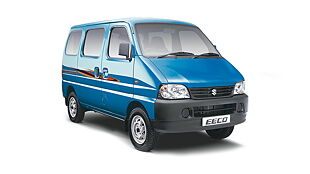
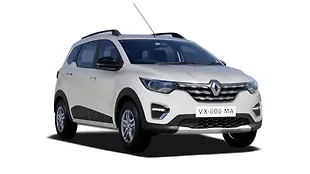
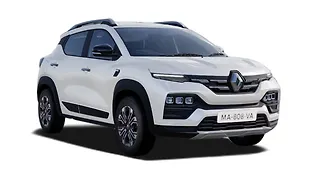
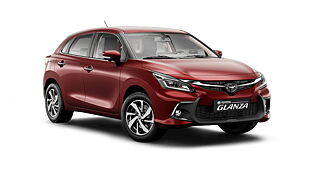
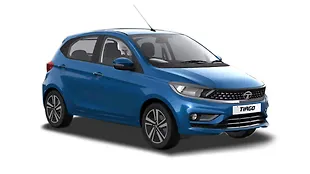

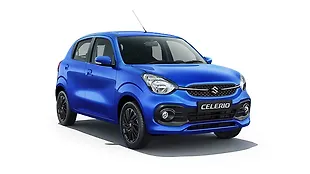
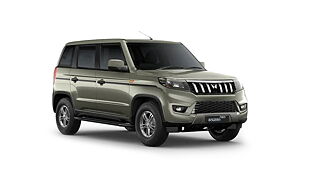
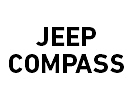
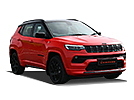
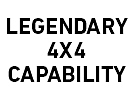



![Second hand Datsun GO+ T [2018-2019] Second hand Datsun GO+ T [2018-2019]](https://imgd.aeplcdn.com/310x174/cw/ucp/stockApiImg/IS9ISKY_fn5hh8kq_1_49156524.jpg?q=80)
![Second hand Datsun GO+ T [2018-2019] Second hand Datsun GO+ T [2018-2019]](https://imgd.aeplcdn.com/310x174/cw/ucp/stockApiImg/F8JN7TK_1l84jqvb_1_49901994.jpg?q=80)




![Second hand Datsun GO+ T [2018-2019] Second hand Datsun GO+ T [2018-2019]](https://imgd.aeplcdn.com/310x174/cw/ucp/stockApiImg/UCGEV0Y_1b4pmke5_1_49916951.jpg?q=80)